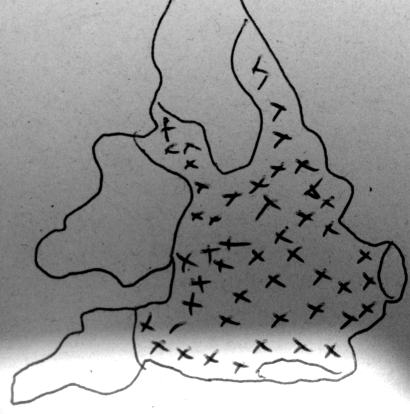 Southwest
Environmental Limited
Southwest
Environmental Limited Southwest
Environmental Limited
Southwest
Environmental Limited| London |
| 02076 920 670 |
| Exeter |
| 01392 927 961 |
| Manchester |
| 01612 970 026 |
| Bristol |
| 01173 270 092 |
Concrete and buried steels, can be "attacked" and weakened by acids within soils. This lead to problems such as "concrete cancer" and in general will shorten the life span of the concrete and structural steel elements being considered.
Aggressive ground is a term used in numerous technical writings with regard to unfavorable pH or resistivity within soils and rocks. The primary standard by which aggressivity is assessed is BRE SD1.

There are numerous geological units in the UK that are known to create the potential for aggressive ground. These are the:
London Clay
Kimmeridge Clay & Oxford Clay
Lower Lias Clay
Gault Clay
Weald Clay
Murcia Mudstone
Where you foundation are to be sited within these geological units it is
important to consider that the choice of concrete, or grout will differ to sites
where ground aggressivity is not as pronounced.
Acids from the ground acting on buried concrete can effect its strength in the medium to long terms. Water is required for the rection to take place. The reaction of these with water leads to setting and hardening of cement when it is gauged with water. The C~ (Tricalcium aluminate), C3S (Tri calcium silicate) and C,.AF (Tetra calcium alumina ferrite) phases react very rapidly.
Soil resistivity indicates the ability of a soil environment to carry corrosion currents. It is subsequently a function of the soil moisture content and the concentration of the current carrying soluble ions (Palmer, 1989). Soil resistivity is generally controlled by ‘spaces, fractures and the amount and composition of fluids that fill the pore spaces within a soil mass’ (Alhazzaa, 2007).
BRE Special Digest 1 provides guidance on the specification for concrete for installation in natural ground and in brownfield locations. The procedures given for the ground assessment and concrete specification cover the fairly common occurrences of sulfates, sulfides and acids, and the more rarely occurring aggressive carbon dioxide found in some ground and surface waters, which affects concrete foundations and sub-structures. Gives procedures for specification of concrete and applies to both buildings and civil engineering construction.